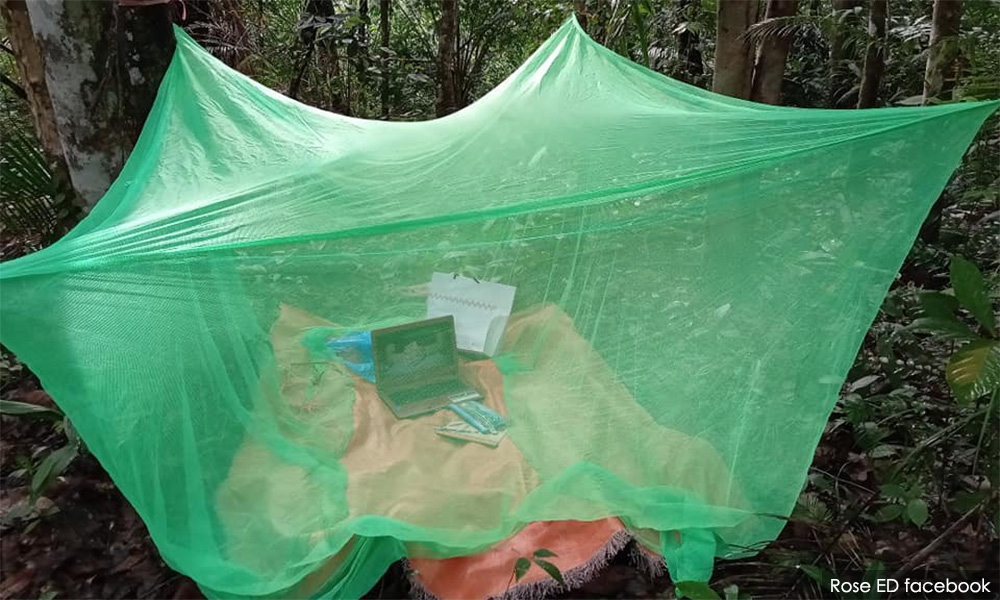Any honest educationist will tell you that this year (2020) is a lost year in education. Policymakers and education providers pretend there is no problem and that education is proceeding as usual, except that it is now using technology to deliver classes.
The truth is, Covid-19 has seriously affected the teaching and learning of students at all levels – schools, colleges, and universities. It is not only their education that has been affected. Many students are suffering from mental distress because they have been cut off from their routines in schools and colleges.
I would venture to say that little learning has taken place in 2020. This is not just in Malaysia. It is true for almost all countries in the world affected by Covid-19. The difference is only one of degree. Some countries are handling Covid-19 better than others, but all are struggling to cope with teaching and learning where students cannot meet face-to-face with teachers and instructors.
This is largely because learning is collegial and interactive. At higher levels, like post-graduate studies and research, learning is more individual. It is self-learning and self-motivation. A periodic chat with your academic supervisor to make sure you are on the right path will do. Learning technologies are most useful at this level of education.
At the school level, the learning and teaching dynamics are completely different. Learning is teacher-centred. Education theorists will disagree. They will argue for a student-centred learning environment. But anyone who has taught in schools will know the central and critical role of teachers. Everything else is supplementary.
A teacher-centric environment does not mean the student is not important or he has no role in his learning. He has, but that role is activated by the teacher. It is the teacher who is the initiator of the learning process. He guides, cajoles, inspires, and expands the learning environment. Take the teacher away, the student becomes passive and his learning frontier shrinks. This is noticeable in classrooms. Where the teacher is exciting and inspiring, there is a great deal of learning going on. Where the teacher is dull, the class is dull, with little learning taking place.

This is particularly true in elementary and primary schools. The teacher is the role model and the catalyst. He/she is seen as the know-all by the student. This relationship is central to the learning process. Sitting at home with gadgets can never be the same. Online learning, at best, can only mimic the learning that takes place in a classroom with an inspiring teacher. Of course, online learning is better than no learning. But the point is, the children have lost out on the education they would have received in a classroom environment.
The loss of real education is more serious in secondary schools and colleges. Any claim to the contrary is a pretence. Here, I am personally familiar with the actual problems of online teaching and learning. Most teachers and instructors do not have the skills to use online teaching technologies effectively. They are trained and experienced to teach face-to-face classes. They are struggling with online teaching.
In particular, students and instructors are finding it difficult to handle certain courses online because of their technical and practical nature, courses like accounting and finance in business studies. These courses require a lot of “teaching”. Online is not the right medium for such subjects. Instructors are getting across just the bare minimum to students. This is generally true for all subjects and courses.
Students are learning a lot less. Instructors are teaching a lot less. Student assessments that are less vigorous and even questionable have been designed for the online system. So, students can get good grades. The actual learning is minimal.
Policymakers, school administrators, and teachers know that in the online system it is the student who is paying the price with poor quality education. The students affected most are SPM, STPM, and final year students in diploma and degree studies. The performance of these students is critical for their future. The online system has disrupted their educational plans and career goals.
A further problem with online education is that it is not an equaliser but a discriminator. It discriminates in favour of the middle-class and well-to-do and against the poor and less educated. Online education calls for resources to purchase needed computers, laptops, tablets, and smartphones. Students also have to pay for Internet services. Many from working-class homes cannot afford these gadgets or pay for the services, especially if there are several school-going children in the family.

Often, these students live in places where there is no or poor access to the Internet. This reminds me of the girl in Sabah who had to climb a tree to access the Internet. More recently, three students in Sabah fell from a suspension bridge when they tried to get access to the Internet. Without access to the Internet, these students are stranded.
Additionally, students from poor homes cannot get help from their parents when they have problems with online classes. Their parents do not have the skills or time to guide them. My granddaughter who is in Grade Three in an international school has heaps of online homework to do. Her mother sits with her every day at home to assist with the assignments (incidentally, with online education we don’t know who is actually doing the homework assignments).
This kind of help will not be available to children from working-class families. Such children cannot cope with online education and eventually drop out or fall behind. Online education clearly discriminates against the poorer sections of the community.
Educational problems associated with poverty are more manageable in a classroom environment. Online classes compound poverty problems in education. When classes are online, students from poor homes often take up part-time jobs, especially when their household income falls. Consequently, they skip classes, do not submit assignments on time, and even miss exams. Students from poor homes bear the brunt of the problems with online education.
Finally, education is not just about information. Information can be acquired from different sources and through different media. Education is providing a life-changing experience to young minds that will shape their future and character. At a formative age, this can only come from collegial learning. Technology can enhance this experience but not replace it. Students need to come together, study together, play together.
Only in this environment can they learn the social skills needed to live in communities. They develop values that will determine who they will become. They develop lasting memories of their youth. They form friendships that will last the rest of their lives. They discover their strengths and weaknesses. They learn discipline. All this has been taken away from students in 2020. It is a lost year in education for them.
My purpose here is not to blame anyone for the lost year. My purpose is to explain how online education has impacted students and how we can reduce its downside in the future. Policymakers were not ready for Covid-19. When schools and colleges had to be closed, the only option was to switch to online education.
Now we know this switch is not easy to make. Many processes need to be in place before an online system can work. Now is the time to plan for the next epidemic. With such planning, the downside of online education that we are experiencing now can be significantly reduced.

What are the ingredients of a good online education system? The system needs to incorporate the following:
- Training teachers and instructors in online teaching skills.
- Developing a curriculum to give students more IT skills, especially in online communication and learning.
- Using blended teaching (online and in-person) as the norm.
- Developing appropriate technologies to deliver classes online.
- Designing delivery and assessment systems
- Providing stable access to the internet for students and instructors
- Building credibility into the system
The key idea is not to wait for the next epidemic. We need to start incorporating elements of online teaching in our schools and colleges now so that teachers, students, and instructors can function effectively when we do go online. The priority will remain face-to-face teaching and learning, but with increasing incorporation of online elements and self-learning.
The system should gradually create a balance between teacher and self. At higher levels, the shift will be toward self-learning and away from the instructor. At this point, the learning environment will be completely different. For this to happen, we need to gradually change the teaching and learning culture in our schools and colleges.
I LOURDESAMY is an educationist. - Mkini
The views expressed here are those of the author/contributor and do not necessarily represent the views of MMKtT.




No comments:
Post a Comment
Note: Only a member of this blog may post a comment.